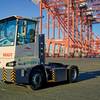Demand for methanol and vegoil will moderately support global seaborne trade causing the shipping fleet trading in chemicals and vegoils to expand, according to the latest edition of the Chemical Forecaster, published by global shipping consultancy Drewry.
A press release from Drewry said that the orderbook contains 144 stainless steel vessels totalling 3.4 mdwt for delivery by 2020, almost 22% of the existing capacity for such vessels; 63 of these vessels are in the size range of 25,000-40,000 dwt, while in the existing fully stainless steel fleet, there are 143 vessels in the size of 25,000-40,000 dwt category. These large vessels are meant to be employed in the pure chemical trade.
The chemical tanker fleet grew by 1.3% in the first quarter of 2017 with the addition of 36 vessels (50 new deliveries and 14 removals). The fleet that trades in chemicals and vegoils expanded by 26 vessels and in clean petroleum products (CPP) by 10.
This is a definite role reversal from the first quarter of 2016 when 9 vessels were added for chemicals and vegoils and 19 for CPP trade, indicating the current mood of the market. The chemical fleet also saw a higher number of vessels trading in chemicals and vegoils for the first time since 2012. It is also worth noting that almost all the ships trading in the CPP market have the ability to switch to vegoils; as a result these vessels are expected to carry chemicals and vegoils whenever they can earn higher profits.
Nonetheless, there are still far too many operators at the moment – sometimes competing in the same trade lanes, which does not help the market to consolidate any time soon. Of the big operators, Odfjell has 10 stainless steel tankers on order averaging 45,000 dwt in addition to the 40 vessels of above 19,000 dwt in its current fleet, a move to position them better when the market shrinks further.
All major players are looking to place themselves in geographically advantageous positions to reduce the turnaround time and thus limit the operating costs, which will only make it harder for the smaller players to compete.
“Future deliveries will mainly be for the chemical and vegoil carriers as the clean petroleum products (CPP) fleet is currently oversupplied. Thus with current vessels on order, deliveries for both segments will increase by around 1.7% by end-2017,” said Hu Qing, Drewry’s lead analyst for chemical shipping.
Hu Qing added: “By 2018 the chemical and vegoil carrying fleet will outpace its CPP counterpart in terms of growth. In this current scenario major players can only revive the market through consolidation, while the smaller players will find it hard to survive,” added Qing.













